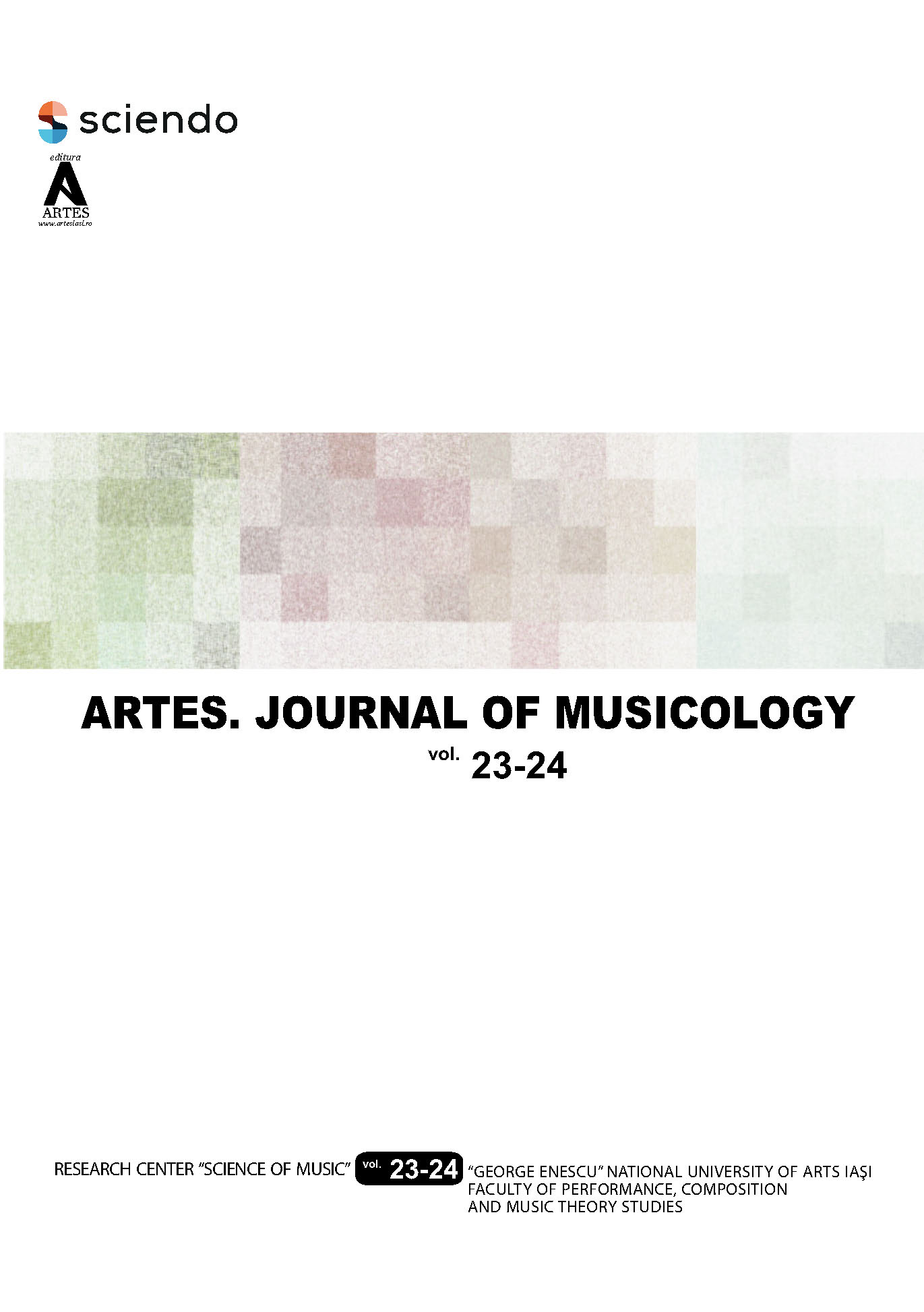Romanian-Greek manuscript inventory number 27 Anthology – An Account of the activity of the copyist Chiril Monahul from Bisericani Monastery (Neamt County)
Romanian-Greek manuscript inventory number 27 Anthology – An Account of the activity of the copyist Chiril Monahul from Bisericani Monastery (Neamt County)
Author(s): Irina Zamfira DănilăSubject(s): Music
Published by: Editura ARTES
Keywords: Romanian Greek anthology of Orthodox chants; the “Dumitru Stăniloae” Ecumenical Library of the Metropolitan Church of Moldavia and Bukovina – Iași; 19th century;
Summary/Abstract: This paper is a fraction of an ampler project aimed at classifying and studying the entire collection of musical manuscripts from the “Dumitru Stăniloae” Ecumenical Library of the Metropolitan Church of Moldavia and Bukovina of Iasi. This documentary collection consists of a number of 32 musical manuscripts, in Chrysantine notation mainly originating from the 19th century. Manuscript 27 was created in 1846 by Cyril the Monk from the Bisericani Monastery (Neamt county) – he was a psalter, composer and copyist of great talent. He wrote other two manuscripts, ms. inventory numbers 23 and 31/49, which are in the “Dumitru Stăniloae” Ecumenical Library of the Metropolitan Church of Moldavia and Bukovina of Iasi. His own creation (with the mention “by the writer”) in Ms. 27 contains the first psalm, Blessed is the man in the plagal of the 4th mode, the troparia God is with us in the plagal of the 4th mode, the polyeleos Good word in the 4th mode legetos, the doxastikon of the Easter, The day of Ressurection, the plagal of the 1st mode and two heirmoi of the Holy Week. These are chants that are remarkable through their fluidity and expressiveness, as they retain the specific psaltic melodic formulas and reveal a balanced analytical musical writing. The liturgical music in Manuscript 27 consists of various chants, from those performed during the Vespers to the Matin and the Liturgy. Following analysis of the manuscript’s repertoire, I discovered that the main source of Ms. 27 is the first three volumes of the Anthology by Nektarios Frimu, published in Neamț (3rd volume, 1840) and Iași (1st and 2nd volume, 1846). Cyril the Monk, the copyist of Ms. 27, selected works from these sources, and introduced along the self-authored chants mentioned earlier, chants by other lesser-known authors, such as Nechifor (The Blessings of the Ressurection, the plagal of 1st mode in Greek) and Calinic (troparia from the chant Lord is with us, the plagal of the 4th mode in Romanian and the polyeleos The Lord’s servants, the plagal of the 2nd mode, in Greek). Besides, among the chants in Romanian, the manuscript records chants in Greek (by established Greek authors), which are proof of the continuous practice of the Greek chanting in Moldavia, long with that in Romanian, in the period before the Reforms (1863-1864) introduced by Alexandru Ioan Cuza, the ruler of the Romanian Principalities.
Journal: Artes. Journal of musicology
- Issue Year: 2021
- Issue No: 24
- Page Range: 300-320
- Page Count: 21
- Language: English

